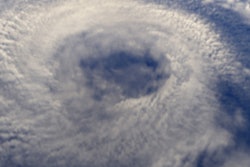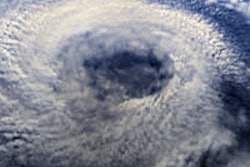Every hospital radiology department has its emergency manuals, laboriously put together and maintained as required by the Joint Commission. But there's an important factor that typical emergency plans overlook.
That factor is the department's personnel. What happens if radiological staff can't get to the facility in an emergency? Or what if they don't have an emergency plan for their families -- and instead of assisting in disaster response efforts at the hospital or even in the shelter they may find themselves in -- they're struggling to get their families safe?
Helping hospital radiology staff prepare their families for emergencies could be the key to successful, coordinated disaster response, according to John Clouse, a radiological technologist and associate professor of radiography at Owensboro Community and Technical College in Owensboro, KY. Clouse has served in Afghanistan through the U.S. Army National Guard, and also contributed to disaster relief efforts in New Orleans after Hurricane Katrina in 2005.
At the 2007 American Healthcare Radiology Administrators (AHRA) conference in Orlando, Clouse suggested some crucial measures radiology administrators can help their staff put in place before an emergency hits that will help them be ready and available to serve the larger community.
"For a moment, lay aside the emergency manuals," Clouse said. "In theory they'll work, but the key component in all of those, and the most overlooked and invaluable resource a hospital has, is its personnel. Obviously, it will be difficult to deal with an emergency if your staff just isn't there."
Help staff make a plan
After Hurricane Katrina hit, medical professionals were willing to help but were displaced or in shelters themselves trying to cope, Clouse said.
"If your neighborhood looks like New Orleans did after Katrina, your highest priority is not going to be coming to work, but taking care of your family," he said.
To counteract the chaos factor, radiology department administrators can help their employees build a plan that will allow them to take care of their families in a disaster and get back to work, perhaps through in-service days that focus on dealing with emergencies. Refer staff to the U.S. Department of Homeland Security or the Federal Emergency Management Agency (FEMA) for emergency preparedness information, Clouse said.
To create a family disaster plan:
Establish lines of communication. Determine how family members will communicate; choose an out-of-state contact person in case phone lines within the state are disrupted; and preprogram emergency information text messages into cell phones. Create a written plan for the home that can be pulled out quickly and that lists an emergency protocol the family has developed.
Gather key documents. In an easily accessible folder, keep copies of important papers such as wills, insurance policies, marriage licenses, birth certificates, and home and car titles. Store originals in one place, copies in another. Include some cash.
Determine a rally point. Decide where the family will meet in the event of disaster, and include maps of the site as well as the surrounding area.
Develop an evacuation plan. Make a checklist of what needs to be done before the family evacuates, including where gas and water valves are and the tools necessary to turn them off.
Plan for pets. Not only is it a good idea to keep emergency pet supplies on hand, it's also good to think about what to do with Sparky if the shelter refuses animals.
Create disaster kits for home and car. Gather basic medical supplies (including prescriptions), food, and water, and keep them in a safe and protected place.
Emphasize the basics
In a disaster, basic medical skills learned early in training come in handy. In addition to helping radiology department staff members put together a family disaster plan, hospital administrators can help them prepare to be "medical citizens" in an emergency, Clouse said.
"Our specific field may be radiology," he said. "But we're all capable of performing basic medical care, like taking vital signs or placing an IV. A hospital's radiological staff should behave as medical professionals, not only as x-ray technologists."
Clouse recommends also offering in-services to practice these fundamental skills, including conducting a general physical exam, palpating joints, and CPR.
"If individual staff members aren't prepared and their basic medical knowledge refreshed, it will be even more challenging in time of disaster," Clouse said. "Radiology department administrators need to evaluate whether their personnel is prepared."
By Kate Madden Yee
AuntMinnie.com staff writer
September 5, 2007
Related Reading
Joint Commission MR safety surveys: Moving past the fire extinguisher, August 29, 2007
Healthcare facilities vigorously enforce patient privacy, August 27, 2007
Staff radiation safety: Putting an effective program into practice, August 17, 2007
Stand around and wait -- stat! What's your imaging suite emergency procedure? June 11, 2007
How to calculate your MRI suite safety score, February 8, 2007
Copyright © 2007 AuntMinnie.com




















